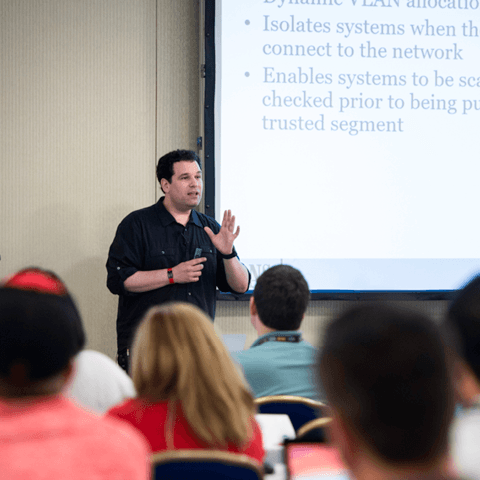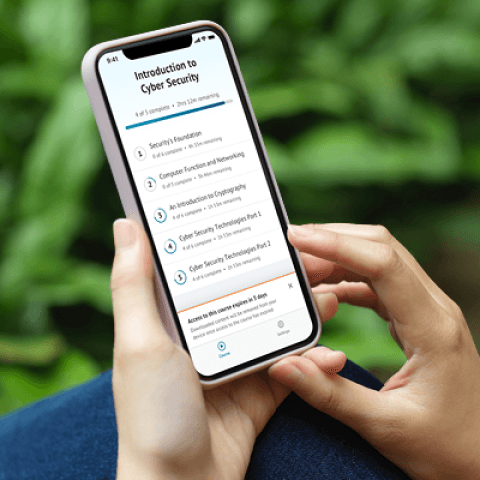SEC595: Applied Data Science and AI/Machine Learning for Cybersecurity Professionals


Experience SANS training through course previews.
Learn MoreLet us help.
Contact usBecome a member for instant access to our free resources.
Sign UpWe're here to help.
Contact UsApply your credits to renew your certifications
Attend a live, instructor-led class at a location near you or remotely, or train on your time over 4 months
Course material is geared for cyber security professionals with hands-on experience
Apply what you learn with hands-on exercises and labs
Deepen your advanced network forensics experience, including threat hunting, analysis, and incident response. Explore the tools, technology, and processes needed to integrate network evidence sources.
From a perspective of a strategic CTI analyst, I appreciated that the course allowed me to see, understand, and at time even personally conduct processes that I had previously only known in theory. The well-constructed exercises allowed me to engage with programs, files, and processes that I would otherwise never lay my hands on - even though I read about them every day. Through this, the course has given me a new depth of understanding of threat actors' behaviors and IR processes, and therefore largely improved my analytical skillset.
Today’s investigative teams actively hunt threats, using known evidence and fresh intelligence to uncover incidents others have missed. FOR572: Advanced Network Forensics: Threat Hunting, Analysis, and Incident Response covers the most critical skills needed for an increased focus on network communications and artifacts in investigative work. In this network forensics course, you’ll gain working knowledge of investigative tools, techniques, and procedures required to integrate network evidence sources into your investigations, with a focus on efficiency and effectiveness. You’ll leave this course with a well-stocked toolbox and the knowledge to use it on your first day back on the job.


Phil Hagen shaped network forensics with SOF-ELK® and SANS FOR572, setting standards in large-scale log analysis and response. His role in exposing a global fraud ring behind hundreds of millions in losses defines his lasting impact on cybersecurity.
Read more about Phil HagenExplore the course syllabus below to view the full range of topics covered in FOR572: Advanced Network Forensics: Threat Hunting, Analysis, and Incident Response.
Section one introduces unique aspects of network forensics and how traditional digital forensic skills apply to network evidence. It covers data acquisition methods like packet capture and proxy logs, along with tools such as tcpdump and Wireshark. Students will analyze proxy data, extract exfiltrated content, and explore key network devices and protocols.
This section covers how to identify malicious activity by analyzing common network protocols and their anomalies. It highlights the value of log data over full-packet capture and introduces tools like SOF-ELK® for scalable log aggregation and analysis. Students will profile protocols like HTTP and DNS and practice efficient log analysis techniques.
This section explores NetFlow as a key tool for tracking attacker behavior and identifying network anomalies with minimal storage overhead. Students will analyze NetFlow data, reconstruct file transfers like FTP, and investigate Windows protocols such as SMB used in lateral movement and data theft.
Section four covers the role of commercial tools in network forensics, emphasizing their scalability and integration into investigative workflows. We explore wireless network forensics, highlighting unique artifacts and attack vectors. Students will use NetworkMiner and Arkime for large-scale packet analysis and object extraction from full-packet captures.
This section teaches how to analyze encrypted and undocumented network traffic to uncover hidden attacker activity. It covers SSL/TLS profiling, protocol misuse, and maintaining operational security to avoid alerting adversaries. Students also learn best practices for safely sharing threat intelligence.
In this capstone section, students work in groups to analyze network evidence from a real-world attack, identify the attacker’s actions, and present findings. The focus is on using only network data to build and communicate a clear forensic narrative with both executive and technical summaries.
This expert applies new threat intelligence against existing evidence to identify attackers that have slipped through real-time detection mechanisms. The practice of threat hunting requires several skill sets, including threat intelligence, system and network forensics, and investigative development processes. This role transitions incident response from a purely reactive investigative process to a proactive one, uncovering adversaries or their footprints based on developing intelligence.
Explore learning pathMonitor the organisation’s cybersecurity state, handle incidents during cyber-attacks and assure the continued operations of ICT systems.
Explore learning pathResponsible for analyzing digital evidence from computer security incidents to derive useful information in support of system and network vulnerability mitigation.
Explore learning pathExecute digital forensic operations under demanding conditions, rapidly extracting critical intelligence from diverse devices. Leverage advanced threat hunting and malware analysis skills to neutralize sophisticated cyber adversaries.
Explore learning pathThis expert applies digital forensic skills to a plethora of media that encompasses an investigation. If investigating computer crime excites you, and you want to make a career of recovering file systems that have been hacked, damaged or used in a crime, this may be the path for you. In this position, you will assist in the forensic examinations of computers and media from a variety of sources, in view of developing forensically sound evidence.
Explore learning pathAnalyze network and endpoint data to swiftly detect threats, conduct forensic investigations, and proactively hunt adversaries across diverse platforms including cloud, mobile, and enterprise systems.
Explore learning pathThis role investigates, analyzes and responds to cyber incidents. Find the SANS courses that map to the Incident Response SCyWF Work Role.
Explore learning pathThis dynamic and fast-paced role involves identifying, mitigating, and eradicating attackers while their operations are still unfolding.
Explore learning pathAdd a GIAC certification attempt and receive free two practice tests. View pricing in the info icons below.
When purchasing a live instructor-led class, add an additional 4 months of online access after your course. View pricing in the info icons below.
First course I’ve taken that gives insight into the forensic mindset required for investigating incidents.
The example of the http proxy and how it works was a great use case as to the importance of this course.
The day 6 was a challenge and I had a ton of fun with playing with all the tools we had been provided.
I feel like the last week has been a massive eye-opener into what extra information I can now use in my forensic investigations.

Get feedback from the world’s best cybersecurity experts and instructors

Choose how you want to learn - online, on demand, or at our live in-person training events

Get access to our range of industry-leading courses and resources